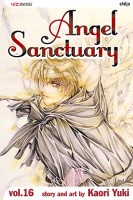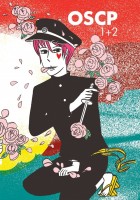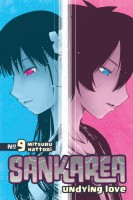My News and Reviews
I managed to post two in-depth manga reviews at Experiments in Manga last week, though it looks like I’ll only be posting one this coming week since taiko will be keeping me pretty busy with a number of different performances and related events. Inio Asano’s A Girl on the Shore was the first manga that I reviewed last week. Like the rest of Asano’s work that I’ve read, it can be emotionally intense and hard-hitting at times, but it’s very well done. As part of my monthly horror manga review project, last week I also took a look Mushishi, Volumes 8, 9, and 10, the final installment in the English-language release of Yuki Urushibara’s award-winning debut. Although I’ve reached the end of the series proper, I’m planning on at least more Mushishi-related post before I’m through.
Elsewhere online: The BBC has an interesting piece on Keiko Takemiya—The godmother of manga sex in Japan. Rokudenashiko was interviewed by the Anne Ishii of MASSIVE about controversial art and free speech. Otaku USA posted an interview with translator and scholar Frederik L. Schodt about his work and Osamu Tezuka. An interview with Steve Oliff, the colorist who worked on Marvel’s release of Katsuhiro Otomo’s Akira, was posted at Anime News Network. In licensing news, Dark Horse has picked up the Psycho-Pass: Inspector Shinya Kogami manga written by Midori Goto and illustrated by Natsuo Sai. Finally, the Skip Beat! crowdfunding effort that I mentioned a couple weeks ago has moved from Indiegogo to Kickstarter.
Quick Takes
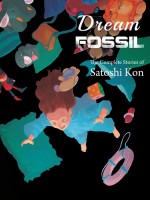 Dream Fossil: The Complete Stories of Satoshi Kon by Satoshi Kon. Compiling fifteen of Kon’s short manga from between 1984 and 1989, as well as an essay by Susumu Hirasawa (which was a pleasant surprise), Dream Fossil is a somewhat peculiar volume which will probably be of most interest to Kon enthusiasts although other readers may find parts of it appealing as well. As is the case with so many collections, some stories are much stronger than others. Some of the unevenness can likely be attributed to the fact that Dream Fossil consists of Kon’s early works in which his narrative techniques were still being refined and developed. I actually found myself frustrated with some of the stories because they read less like manga and more like a storyboard or broad outline for a more involved work; some of the stories and ideas seem like they would have been better conveyed through animation rather than sequential art. Even so, as a whole I did enjoy Dream Fossil. While the storytelling itself was sometimes weak, the underlying concepts and imagery were great.
Dream Fossil: The Complete Stories of Satoshi Kon by Satoshi Kon. Compiling fifteen of Kon’s short manga from between 1984 and 1989, as well as an essay by Susumu Hirasawa (which was a pleasant surprise), Dream Fossil is a somewhat peculiar volume which will probably be of most interest to Kon enthusiasts although other readers may find parts of it appealing as well. As is the case with so many collections, some stories are much stronger than others. Some of the unevenness can likely be attributed to the fact that Dream Fossil consists of Kon’s early works in which his narrative techniques were still being refined and developed. I actually found myself frustrated with some of the stories because they read less like manga and more like a storyboard or broad outline for a more involved work; some of the stories and ideas seem like they would have been better conveyed through animation rather than sequential art. Even so, as a whole I did enjoy Dream Fossil. While the storytelling itself was sometimes weak, the underlying concepts and imagery were great.
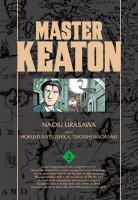 Master Keaton, Volumes 2-4 written by Hokusei Katsushika and Takashi Nagasaki and illustrated by Naoki Urasawa. It’s been some time since I read the first volume of Master Keaton, but being a fairly episodic series without much of an overarching story it wasn’t at all difficult to fall right back into the manga. I first picked up Master Keaton because of Urasawa’s involvement with the manga. This is still a major draw for me, but I continue to read the series because I genuinely enjoy the stories and characters. Keaton is sent all over the world to investigate a wide range of cases, so there’s plenty of variety in the manga’s stories as well. Although the series’ drama, action and adventure is certainly engaging, I especially like the chapters that take advantage of Keaton’s archaeological and academic interests. Master Keaton, while fictionalized, makes use of actual people, places, and events, which I like. (I’ve even learned a few factual tidbits from the manga.) Occasionally the series does get bogged down in historical details that don’t necessarily further the story, though.
Master Keaton, Volumes 2-4 written by Hokusei Katsushika and Takashi Nagasaki and illustrated by Naoki Urasawa. It’s been some time since I read the first volume of Master Keaton, but being a fairly episodic series without much of an overarching story it wasn’t at all difficult to fall right back into the manga. I first picked up Master Keaton because of Urasawa’s involvement with the manga. This is still a major draw for me, but I continue to read the series because I genuinely enjoy the stories and characters. Keaton is sent all over the world to investigate a wide range of cases, so there’s plenty of variety in the manga’s stories as well. Although the series’ drama, action and adventure is certainly engaging, I especially like the chapters that take advantage of Keaton’s archaeological and academic interests. Master Keaton, while fictionalized, makes use of actual people, places, and events, which I like. (I’ve even learned a few factual tidbits from the manga.) Occasionally the series does get bogged down in historical details that don’t necessarily further the story, though.
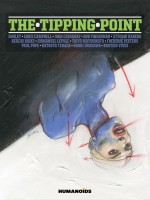 The Tipping Point edited by Alex Donoghue and Tim Pilcher. Published as part of the fortieth anniversary celebrations of the comics publisher Humanoids, The Tipping Point collects thirteen short works from creators influenced by Japanese, Franco-Belgian, and American comics traditions. The anthology specifically caught my attention due to the mangaka involved—Taiyo Matsumoto, Atsushi Kaneko, Naoki Urasawa, Keiichi Koike, and Katsuya Terada—although the European and American creators are notable in their own right. (Sadly, though the collection touts its own innovation and diversity, only male creators are represented, something that is quickly glossed over in the introduction.) I greatly enjoyed the individual comics which range in subject, genre, and tone, but as a collection The Tipping Point seems to be missing a sense of cohesiveness and context. In the end, I was left wondering why these particular creators and why these particular works were selected to be brought together. Perhaps the theme of a “tipping point” was simply too vague or broad.
The Tipping Point edited by Alex Donoghue and Tim Pilcher. Published as part of the fortieth anniversary celebrations of the comics publisher Humanoids, The Tipping Point collects thirteen short works from creators influenced by Japanese, Franco-Belgian, and American comics traditions. The anthology specifically caught my attention due to the mangaka involved—Taiyo Matsumoto, Atsushi Kaneko, Naoki Urasawa, Keiichi Koike, and Katsuya Terada—although the European and American creators are notable in their own right. (Sadly, though the collection touts its own innovation and diversity, only male creators are represented, something that is quickly glossed over in the introduction.) I greatly enjoyed the individual comics which range in subject, genre, and tone, but as a collection The Tipping Point seems to be missing a sense of cohesiveness and context. In the end, I was left wondering why these particular creators and why these particular works were selected to be brought together. Perhaps the theme of a “tipping point” was simply too vague or broad.

